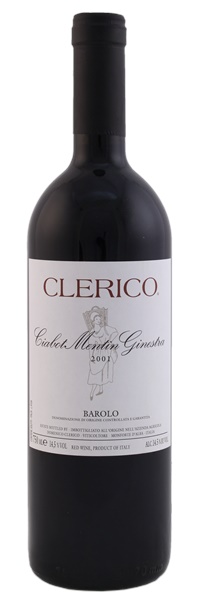Estimate


The best wine ever from Clerico and one of the best textbook Barolos I have ever tasted. Dark, with amazing aromas of crushed berries, flowers and spices, plus a mineral undertone. Full-bodied, with super, well-integrated tannins...
...scents of lead pencil, cedar, black fruits, smoke, earth, and vanilla. Massive richness, monster extract, sweet tannin, and a blockbuster finish characterize this dazzling, 20-30 year wine. Anticipated maturity: 2005-2025.
...Superconcentrated, spicy and sweet, but nearly as backward as a top '96, with superb extract and powerful underlying structure. Finishes with substantial mouthdusting tannins and a late note of dark chocolate.

The best wine ever from Clerico and one of the best textbook Barolos I have ever tasted. Dark, with amazing aromas of crushed berries, flowers and spices, plus a mineral undertone. Full-bodied, with super, well-integrated tannins...
...scents of lead pencil, cedar, black fruits, smoke, earth, and vanilla. Massive richness, monster extract, sweet tannin, and a blockbuster finish characterize this dazzling, 20-30 year wine. Anticipated maturity: 2005-2025.
...Superconcentrated, spicy and sweet, but nearly as backward as a top '96, with superb extract and powerful underlying structure. Finishes with substantial mouthdusting tannins and a late note of dark chocolate.

The best wine ever from Clerico and one of the best textbook Barolos I have ever tasted. Dark, with amazing aromas of crushed berries, flowers and spices, plus a mineral undertone. Full-bodied, with super, well-integrated tannins...
...scents of lead pencil, cedar, black fruits, smoke, earth, and vanilla. Massive richness, monster extract, sweet tannin, and a blockbuster finish characterize this dazzling, 20-30 year wine. Anticipated maturity: 2005-2025.
...Superconcentrated, spicy and sweet, but nearly as backward as a top '96, with superb extract and powerful underlying structure. Finishes with substantial mouthdusting tannins and a late note of dark chocolate.

The best wine ever from Clerico and one of the best textbook Barolos I have ever tasted. Dark, with amazing aromas of crushed berries, flowers and spices, plus a mineral undertone. Full-bodied, with super, well-integrated tannins...
...scents of lead pencil, cedar, black fruits, smoke, earth, and vanilla. Massive richness, monster extract, sweet tannin, and a blockbuster finish characterize this dazzling, 20-30 year wine. Anticipated maturity: 2005-2025.
...Superconcentrated, spicy and sweet, but nearly as backward as a top '96, with superb extract and powerful underlying structure. Finishes with substantial mouthdusting tannins and a late note of dark chocolate.

The best wine ever from Clerico and one of the best textbook Barolos I have ever tasted. Dark, with amazing aromas of crushed berries, flowers and spices, plus a mineral undertone. Full-bodied, with super, well-integrated tannins...
...scents of lead pencil, cedar, black fruits, smoke, earth, and vanilla. Massive richness, monster extract, sweet tannin, and a blockbuster finish characterize this dazzling, 20-30 year wine. Anticipated maturity: 2005-2025.
...Superconcentrated, spicy and sweet, but nearly as backward as a top '96, with superb extract and powerful underlying structure. Finishes with substantial mouthdusting tannins and a late note of dark chocolate.